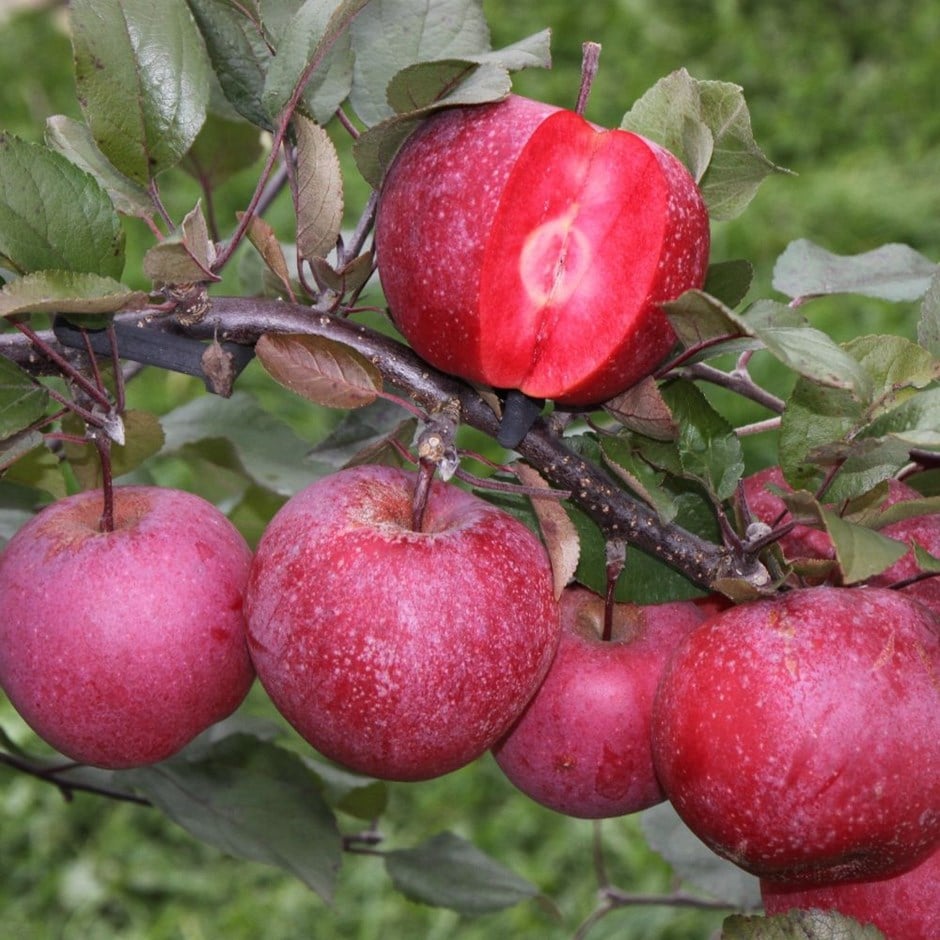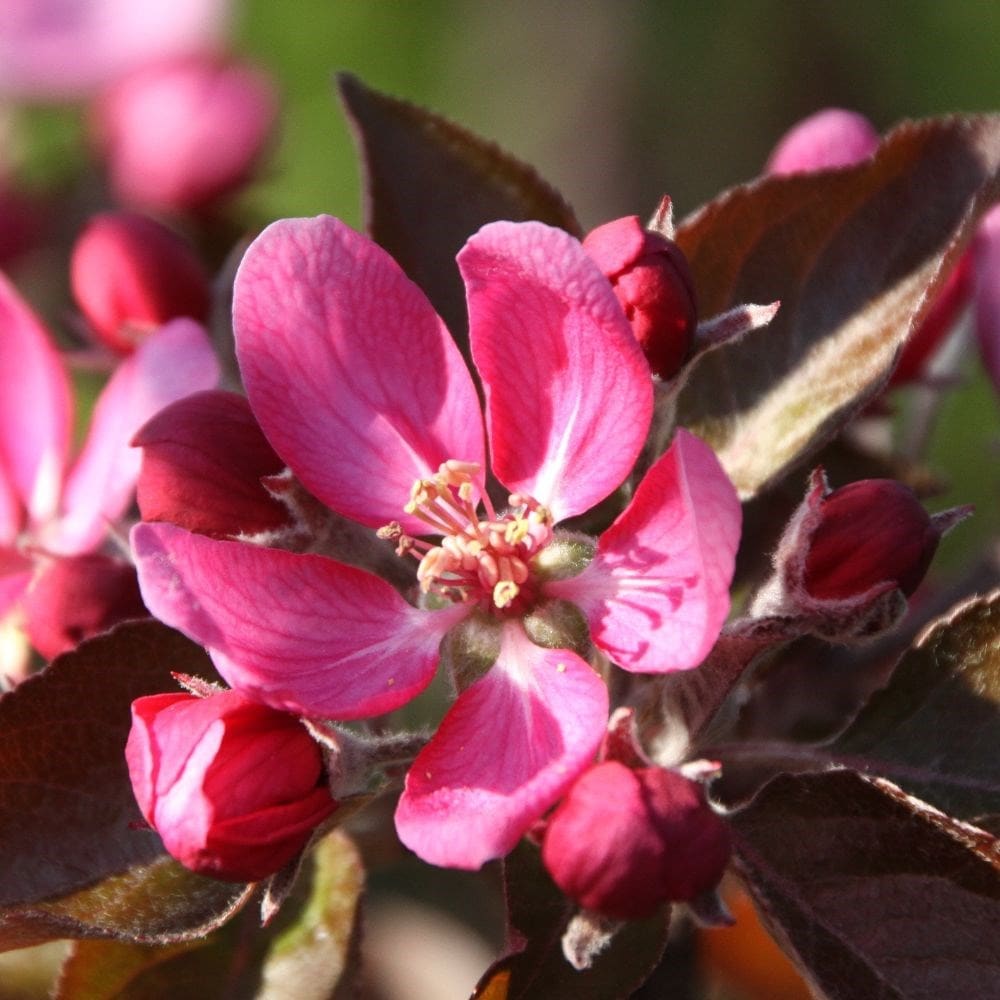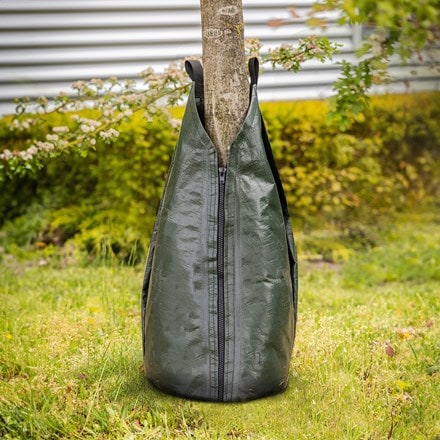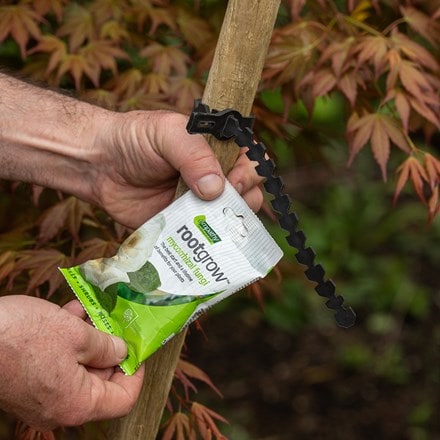apple Tickled Pink ('Baya Marisa')
dual purpose eating / cooking
- 12 litre pot | M26 root stock | 1m
- £149.99
- In stock (shipped within 2-3 working days)
- 12 litre pot | MM106 root stock | 1m
- £149.99
- In stock (shipped within 3-5 working days)
- 12 litre pot | M27 | top worked at 70cm
- £169.99
- In stock (shipped within 3-5 working days)
- bare root | MM106 root stock | 1.2m tall
- £52.99
- available to order from autumn
Delivery options
- Standard £12.99
- Position: full sun
- Soil: moderately fertile, moist but well-drained soil
- Rate of growth: average
- Flowering period: April to May
- Hardiness: fully hardy
'Tickled Pink' is suitable for growing as either a free-standing tree or wall-trained fan/espalier. Good for both eating and cooking with dark-red, speckled skin and distinctive reddish-pink flesh, this dual-purpose apple retains its colour when cooked or dried. Mildly aromatic, the fruit has a crisp texture and a good balance of flavour. The apples are ready to harvest in September, and you can eat them straight off the tree, or use them to make red juice. They will also add a touch of colour to tarts and salads.
Pollination information: This apple belongs to pollination group 3, and requires a pollinating partner from pollination group 2, 3 or 4 to produce a crop of apples. Popular options include: 'Katy', 'Discovery' or 'Granny Smith'.
Pollination information: This apple belongs to pollination group 3, and requires a pollinating partner from pollination group 2, 3 or 4 to produce a crop of apples. Popular options include: 'Katy', 'Discovery' or 'Granny Smith'.
When planting your apple tree, prepare a hole up to three times the diameter of its root system. Fork over the base of the pit in readiness, incorporating plenty of organic matter into the backfill and planting hole. Place the plant in the planting hole and carefully refill, firming the soil around the roots to eliminate air pockets. Insert stake at this point if required.
Avoiding frozen and waterlogged soil, trees should be planted out as they arrive. If you've ordered a bare root tree, soak the roots in a bucket of water for half an hour prior to planting - or if this is not possible, they can be heeled in temporarily, covering their roots with soil, or potted up.
Keep the base of the tree weed free, fertilise at the beginning of each year water regularly during hot, dry spells.
The main prune should be done in the winter as long as it isn't frosty or freezing. Take out the 3D’s (dead, dying and diseased wood) and create an open shape. Then reduce the leaders back by a third. Aim to create an airy structure without any crisscrossing branches.
In August summer prune. Shorten any side shoots (or laterals) which are longer than 20cm back to three leaves. This will allow the sun to ripen the fruit and encourage more fruit buds. Make sure that the growth you’re cutting away feels firm to the touch.
Avoiding frozen and waterlogged soil, trees should be planted out as they arrive. If you've ordered a bare root tree, soak the roots in a bucket of water for half an hour prior to planting - or if this is not possible, they can be heeled in temporarily, covering their roots with soil, or potted up.
Keep the base of the tree weed free, fertilise at the beginning of each year water regularly during hot, dry spells.
The main prune should be done in the winter as long as it isn't frosty or freezing. Take out the 3D’s (dead, dying and diseased wood) and create an open shape. Then reduce the leaders back by a third. Aim to create an airy structure without any crisscrossing branches.
In August summer prune. Shorten any side shoots (or laterals) which are longer than 20cm back to three leaves. This will allow the sun to ripen the fruit and encourage more fruit buds. Make sure that the growth you’re cutting away feels firm to the touch.




